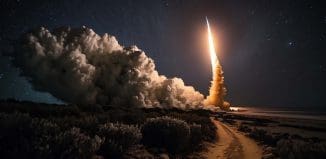Upcoming: Head-to-Head Competition on Leading Laser Weapon
This post is also available in:  עברית (Hebrew)
עברית (Hebrew)
Laser weapons are expected to soon play key roles in US air and missile defense and in some cases could quickly replace traditional artillery or cannons. The goal is operational fielding of laser systems by 2022.
As the Army works to address increasing and changing threats from unmanned aircraft systems and rockets, artillery and mortars, the service is turning to high-energy lasers, installed on tactical vehicles, to protect US ground forces and equipment.
Getting closer to fielding laser weapons on the Army’s ground combat vehicles, a unique Army-industry team is already integrating two Stryker tactical vehicles in Huntsville, Ala. with 50 kW-class laser weapon capabilities and support equipment.
Major defense companies will compete next spring in response to the Pentagon’s quest for a fully operational laser system. Army officials are preparing for a spring face-off at Oklahoma’s Fort Sill, where two leading Pentagon subcontractors — Raytheon and Northrop Grumman — will test their own respective versions of the laser weapon system mounted atop a Stryker vehicle. Kord Technologies serves as the prime contractor for the Pentagon’s laser weapon program.
The two competing companies will face a series of scenarios designed to test the system and establish threshold requirements for this class of laser.
In October 2020, the competing contractors simultaneously evaluated control and functionality against airborne targets. Two additional evaluations, serving as risk reduction events, will take place leading up to the combat shoot-off, as reported by army.mil.
According to washingtontimes.com, the project is a key part of the military’s broader modernization effort and its embrace of cutting-edge technologies.
Army officials said the work by Raytheon and Northrop Grumman is being done in separate areas at an integration facility in Alabama. Keeping the two efforts separate ensured the integrity of the competition, the Pentagon said.





























